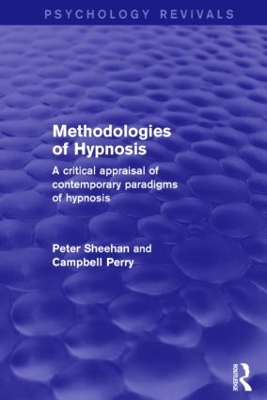Psychology Revivals
2 total works
Methodologies of Hypnosis (Psychology Revivals)
by Peter W. Sheehan and Campbell W. Perry
Originally published in 1976, this title looks closely at the current nature of controls in hypnosis research at the time and tries to assess what they contributed to our knowledge of hypnosis. Specifically, the book analyses the contributions to our understanding of hypnotic phenomena offered by the application of six contemporary methodologies, or paradigms, of hypnosis. The primary concern is with those paradigms that are experimental, rather than clinical, in orientation, and which had emerged over the previous decade as coherent programmatic collections of procedural strategies, all of them associated with distinct and important views of how hypnotic behaviour can best be explained.
Hypnosis and Experience (Psychology Revivals)
by Peter W. Sheehan and Kevin M. McConkey
The subject of hypnosis has not lost any of its ability to fascinate and intrigue – and this holds equally true for both the layperson and the student of hypnotic behavior. Phenomena of hypnosis range from simple tasks involving ideomotor response to more complex tasks involving substantial distortions of perceived reality such as age regression, hallucination, and amnesia. Obviously, with a topic so diverse and so interesting, there are plenty of books around. Originally published in 1982, what makes this title stand out is the authors’ focus: instead of trying to survey the whole field and evaluate the full spectrum of theories about hypnosis, they hone in on specific points of view with the aim of illustrating the nature of hypnotic phenomena.

